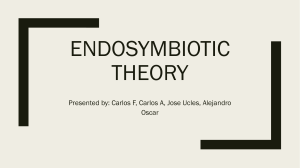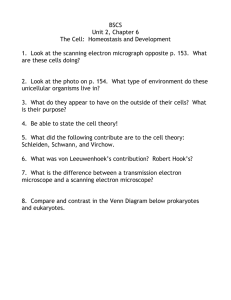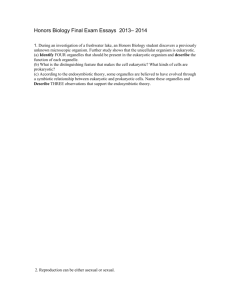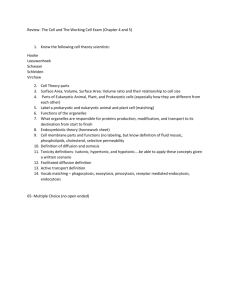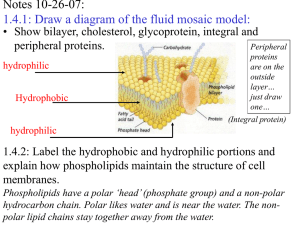Cell Theory and Prokaryote vs. Eukaryote
advertisement
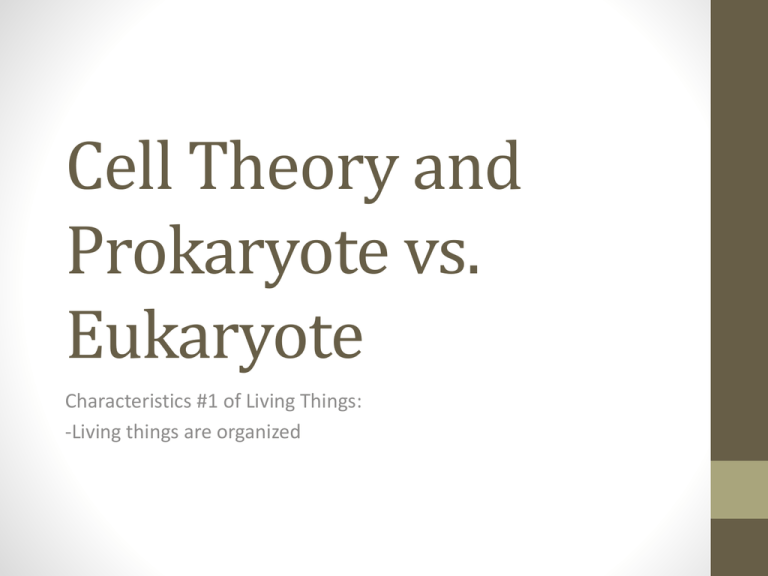
Cell Theory and Prokaryote vs. Eukaryote Characteristics #1 of Living Things: -Living things are organized What is a Cell? 1. Cell – Basic unit of living things. 2. Organisms are either: a)Unicellular – made of one cell such as bacteria and amoebas. OR b)Multicellular – made of many cells such as plants and animals. Multicellular Organization tissue cell organ organism A group of similar cells is called a tissue. A group of similar tissues is called an organ. A group of organs working together form an organ system or organism Scientists to Remember 1.Anton van Leeuwenhoek (1674) a)Father of Microscopy b)Saw tiny living things in pond water. Scientists to Remember 1.Robert Hooke (1665) – Observed “cells” in cork a)Named box-shaped structures as “cells” Other Scientists 1.Matthias Schleiden (1838) – Plants are made of cells. 2.Theodor Schwann (1839) – Animals are made of cells. 3.Rudolf Virchow (1855) – New cells come from existing cells. 4.Janet Plowe (1931) – Cell membrane is a physical structure. 5.Lynn Margulis (1970) – Organelles were once free-living cells. Cell Theory 1.Confirmed discoveries that all scientists believe to be true about cells: a)All organisms (living things) are composed of one or more cells. b)The cell is the basic unit of (life) structure and organization of organisms. c)All (new) cells come from preexisting cells. Microscopes 1.Light Microscope – magnifies tiny organisms up to 1,000 times. -Uses light and lenses. -We use these. 2.Electron Microscope – magnifies up to a million times. -Uses electrons. The Discovery of Cells before nucleus true nucleus Eukaryotes 1. Has a nucleus with a nuclear envelope 2. Bigger and more complex than prokaryotes 3. Have membrane bound Organelles (golgi, ER, lysosomes…etc) 4. DNA – double-stranded and forms chromosomes (highly organized) 5. Can be unicellular OR multicellular organisms 6. Sexual Reproduction by Meiosis 7. Ex: animals, plants, fungi Prokaryotes 1. 2. 3. 4. 5. NO nucleus NO membrane bound organelles (just ribosomes) ALL are unicellular Smaller than eukaryotic cells Forerunner to eukaryotic cells (smaller and more simple) 6. DNA – single strand and circular 7. Asexual Reproduction by Binary Fission 8. Ex: ALL Bacteria Similarities 1. Contain all four macromolecules a) lipids, carbohydrates, proteins, and nucleic acids 2. Both have ribosomes 3. Both have DNA 4. Similar Metabolism 5. Both can be unicellular 6. Have cell/plasma membranes or cell wall Eukaryote VS. Prokaryote Picture Prokaryotic Cell Reproduction Binary Fission Eukaryotic Cell Reproduction Mitosis: cell reproduction for growth and replacement of cells. This makes identical copies (clones) Meiosis: cell reproduction for the production of gametes, such as egg and sperm (sex cells) How did organelles evolve? 1.Biologists generally believe that eukaryotes evolved from prokaryotes. 2.In 1981, Lynn Margulis popularized the “endosymbiont theory.” Endosymbiotic Theory 1.The Endosymbiotic Theory states that present day eukaryotic cells evolved from the uniting of several types of primitive prokaryotic cells a)Some organelles (mitochondria and chloroplasts) might have been were originally prokaryotes that were involved in a symbiotic relationship Endosymbiotic Theory 1. A prokaryote ancestor “eats” a smaller prokaryote 2. The smaller prokaryote evolves a way to avoid being digested, and lives inside its new “host” cell kind of like a pet. Endosymbiotic Theory •Endo = inside Symbiont = friend Endosymbiotic Theory 1.The small prokaryotes that can do photosynthesis evolve into chloroplasts, and “pay” their host with glucose. 2.The smaller prokaryotes that can do aerobic respiration evolve into mitochondria, and convert the glucose into energy the cell can use. 3.Both the host and the symbiont benefit from the relationship Endosymbiotic Theory 1.Chlorella are tiny green cells that live inside some amoeba... endosymbiosis may still be evolving today!
